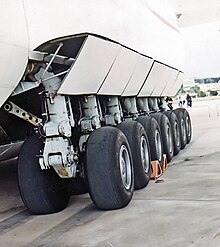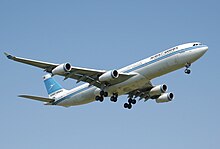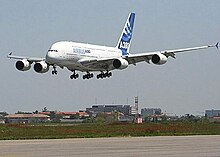Undercarriage

The undercarriage orlanding gear in aviation, is the structure that supports anaircraft on the ground and allows it to taxi, takeoff andland. Typically wheels are used, but skids, skis, floats or a combination of these and other elements can be deployed, depending on the surface.
- 1. LANDING GEAR FAILURE ANALYSISENGR6441Presented by:-ROHIT KATARYA 6306160HARPREET SINGH SHEKON 1707175HASSAN ALSHAHRANI 4626524SUBMITTED TODR. MAMADOU SY
- 2. ABSTRACTo In this project we have done research on the possible failureson the landing gear, and the overall structure and componentsof the gear are analyzed. The materials used to construct gear components are of greatimportance and are selected as per the properties. The maineight components of landing gear are: locks, retractionsystem, breaks, wheels, steering, struts and links. We discussed about the Ductile and Brittle Failure , StressCorrosion Cracking, Stress Rupture, Fatigue CrackingFailure, Dynamic Failure, Landing gear spring failure andWheel failure.
- 3. INTRODUCTIONThe objective of project is to investigate and analyze thepossible failures of different components and systems of thelanding gear with their consequences and solutions.The assignment of project is to perform a detailed systematicstudy of several types of internal defects which makes thelanding gear to fail.In case of mechanical failures, there are 12 types of failures :excessive deflection, thermalshock, impact, creep, relaxation, brittle fracture, ductilefracture, wear, spring failure, corrosion, stress corrosioncracking, and various type of fatigue.Materials are degraded by environmental corrosionprocesses, and such processes can also be influenced by load inthe mechanisms of environmental stress cracking and stresscorrosion cracking
- 4. Landing gear components
- 5. Materials of landing gear The materials used for these components of landing gear are composed ofmainly high strength steels, titanium, aluminum and magnesium.High strength steel-High strength steel have high strength and stiffness.-High strength to volume ratio is the main factor which makes it importantfor the landing gear.Titanium-The titanium has high strength and low density used as for weight saving-The main titanium alloy is Ti-5Al- 5V-5Mo-3Cr, which is used in the maincomponents of landing gear.Aluminum-Modern aircraft consists of approximately 70 % of aluminum alloys. It hasrelatively low cost, light in weight, and can be heat treated to strength level-Aluminum 7075 is used for the landing gear in helicopters because it isstrong, with a strength comparable to many steels, and has good fatiguestrength
- 6. Failure Mechanisms of Landing gear Fatigue Cracking Failure Usually aircrafts and military experience serious damages and the fatigue. Equations used for analyzing: (1)Paris equation:da/dN=C(∆K)n(2) Forman equation:da/dN = C[(∆K)]n/[(1-R) Kcr-∆K](3)Walker Equation:Effective Stress= (1-R) m x Maximum Stress
- 7. Stress Corrosion Cracking SCC is defined as the crack propagation caused by asynergy between a corrosive environment and amechanical tensile stress.Stress Corrosion Crack Growth
- 8. Dynamic Failure When an aircraft lands on the tricycle landing gear(the nose wheel and both landing gear) and the loadaffected by the ground/pavement response aredistributed on them Numerical test showing stress analysis to define thedynamic characteristics of the landing gear, with thevertical-drop test.•Problem of contact between matingcomponents and surfaces of fractures•Investigation into kinematics of the landinggear•Investigation into the problem of dissipation ofenergy in the whole system•Checking of possible failure influence on thestructure behavior
- 9. . Landing gear spring failure The micro cracks acted as stress concentration as wellinitiation crack site leading the springs to fracturedue to fatigueRight and left spring
- 10. Wheel failure During landing, wheels are exposed to a lot of pressure.Through this, overpressure may occur. This could have theeffect that the tread is thrown off.Investigation photos show the damage was limitedto tires and rims only
- 11. Safety, Testing improvementTechnique in Landing gear Non Destructive Evaluation (NDT):Airline Industry and government havelarge NDE programPenetrants testing applied to a safety critical part o the landing gear
- 12. New Technique For Detecting Early Fatigue and failureMaterial changes induced by fatigue, surface coatings, specializedtreatments and corrosion damage can cause a change in the positronenergy distribution response signal received from the component duringinspection. It can detect surface damage up to 3mm.IPA technology for field use will have broad applications for bothmilitary and commercial aerospace industriesAircraft structural and engine issues have become and detecting by IPA-V technology, and related IPA-S technology, used in this research weredeveloped by the Idaho National Laboratory (INL).IPA-V (Left) and IPA-S (Right) Systems
- 13. Noise Reduction As engines become quieter, landing gear is now making a dominatingcomponent of noise in large commercial aircraft. European co-financed research project Silencer is trying to create low noiselanding gear design. Desires 10db reduction in landing gear noise by 2020, has only dropped 3dbso far.Gear up landing prevention system NTSB reports that the majority of gear up landings is due to equipmentmalfunctions. Gear up landing prevention systems will disengage autopilot and alarm at apreset safety altitude if every piece of landing gear is not extended and locked. It can be disengaged if a belly landing is the only option. Composites Composites will be integrated into gear because they are stronger andcheaper than the current used high strength steels and titanium.Improvement In Landing Gear
- 14. Landing gear failure of JET blue airbusOn 9/22/2005, a JetBlue Airbus pilot couldnt get his nose gear to rotate into landingposition
- 15. Testing of Airbus 380 Landinggear in lab.
Antonov
| Aircraft | Wheels and Configuration | Nose section | Center section | Example |
|---|---|---|---|---|
| An-225 | 32 wheels [2x2]+[2x14] |  |  |



























No comments:
Post a Comment